Waterworld we live in: 30 years on from 'Waterworld', Kevin Costner's watery 'Mad Max' is better than you remember
Unfairly dismissed as a flop on release, 'Waterworld' is a spectacular example of the '90s action genre. If only they didn't give him gills…
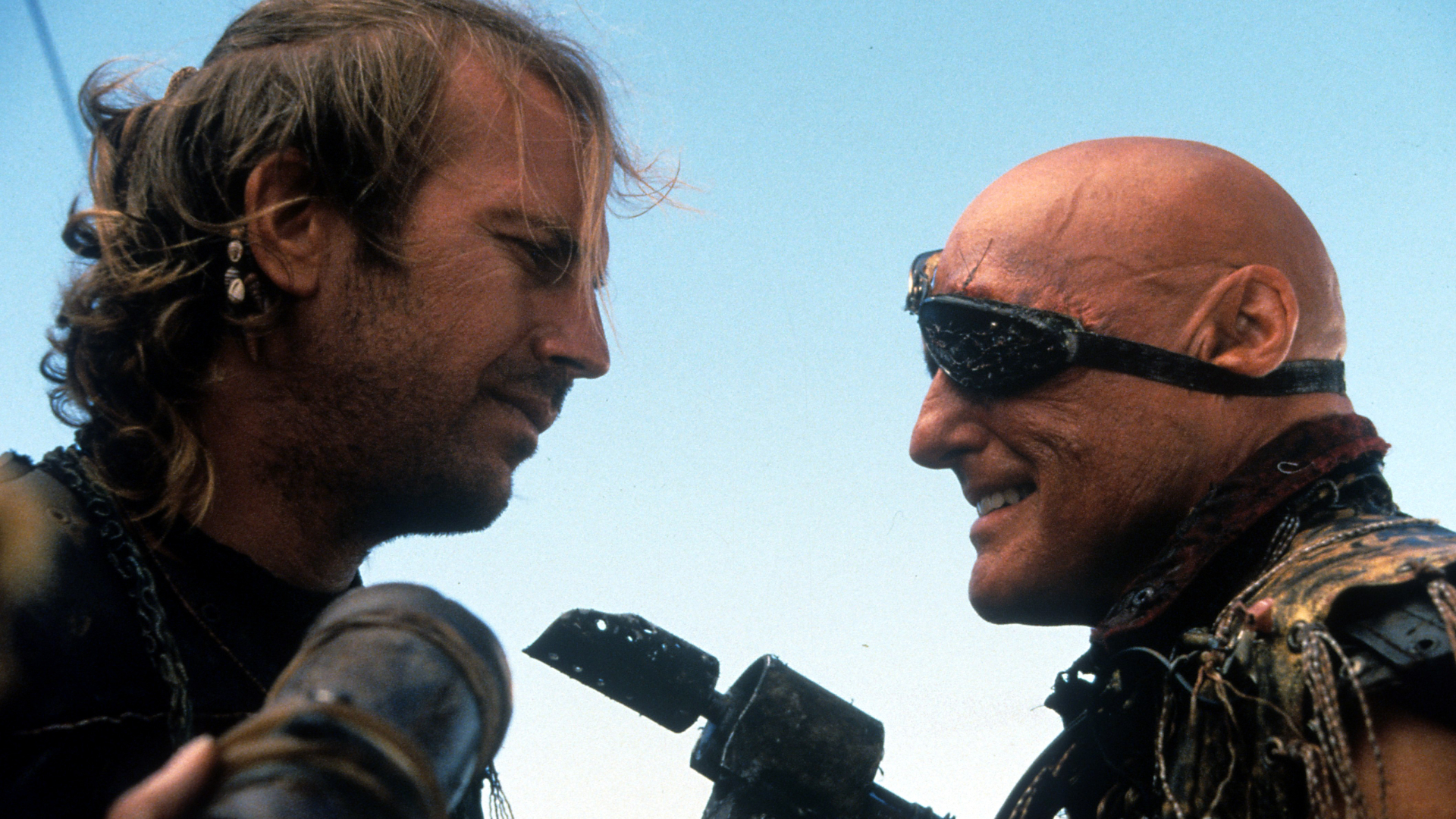
The harpoons were out for "Waterworld" long before it sailed into theaters in July 1995. Despite being headlined by Kevin Costner (still hot property off the back of "Robin Hood: Prince of Thieves", "The Bodyguard" and "Field of Dreams"), the dystopian sci-fi movie's rapidly bloating budget had a bloodthirsty movie press circling like hungry sharks.
The production had also experienced the sort of shooting challenges that only happen at sea, while that age-old problem of creative differences had led to the premature departure of director Kevin Reynolds (who, perhaps ominously, hadn't always seen eye-to-eye with Costner when they'd joined forces on "Robin Hood").
By the time "Waterworld" made landfall, it had already been dubbed both "Fishtar" and "Kevin's Gate", sly nods to infamous flops "Ishtar" and "Heaven's Gate". Yet the movie turned out to be 20,000 leagues from the disaster Hollywood was braced for. It may have only just scraped into the US box office top 10 for the year (a long way behind chart-toppers "Batman Forever" and "Apollo 13"), but would probably have been considered a hit had it not cost an unprecedented $175 million to make. A significantly better return overseas — where the negative publicity arguably had less of an impact — along with decent performance on VHS, went on to ensure that "Waterworld" eventually made a profit.

Now, as "Waterworld" celebrates its 30th anniversary, it's a little easier to look past those dollar signs and the film's undeserved reputation as a failure. Because while undoubtedly flawed, it's an ambitious and spectacular relic from a time when practical filmmaking still ruled the waves.
It certainly deserves better than being written off as "Mad Max: The Sea Warrior", even though original screenwriter Peter Rader (who shares a credit with "Pitch Black" creator David Twohy) has admitted he was shooting for a "Mad Max" territory from the start.
In "Waterworld"'s vision of the future (it never specifies a year on screen), the Earth's polar ice caps have melted, leaving the entire planet submerged as an ocean planet — a premise eloquently illustrated by the flooding of Universal Pictures' familiar globe ident. Look past the global warming parable, however, and it's really just the backdrop for an action-packed, multiplex-friendly race to set foot on the "dry land" that's long since been consigned to myth.
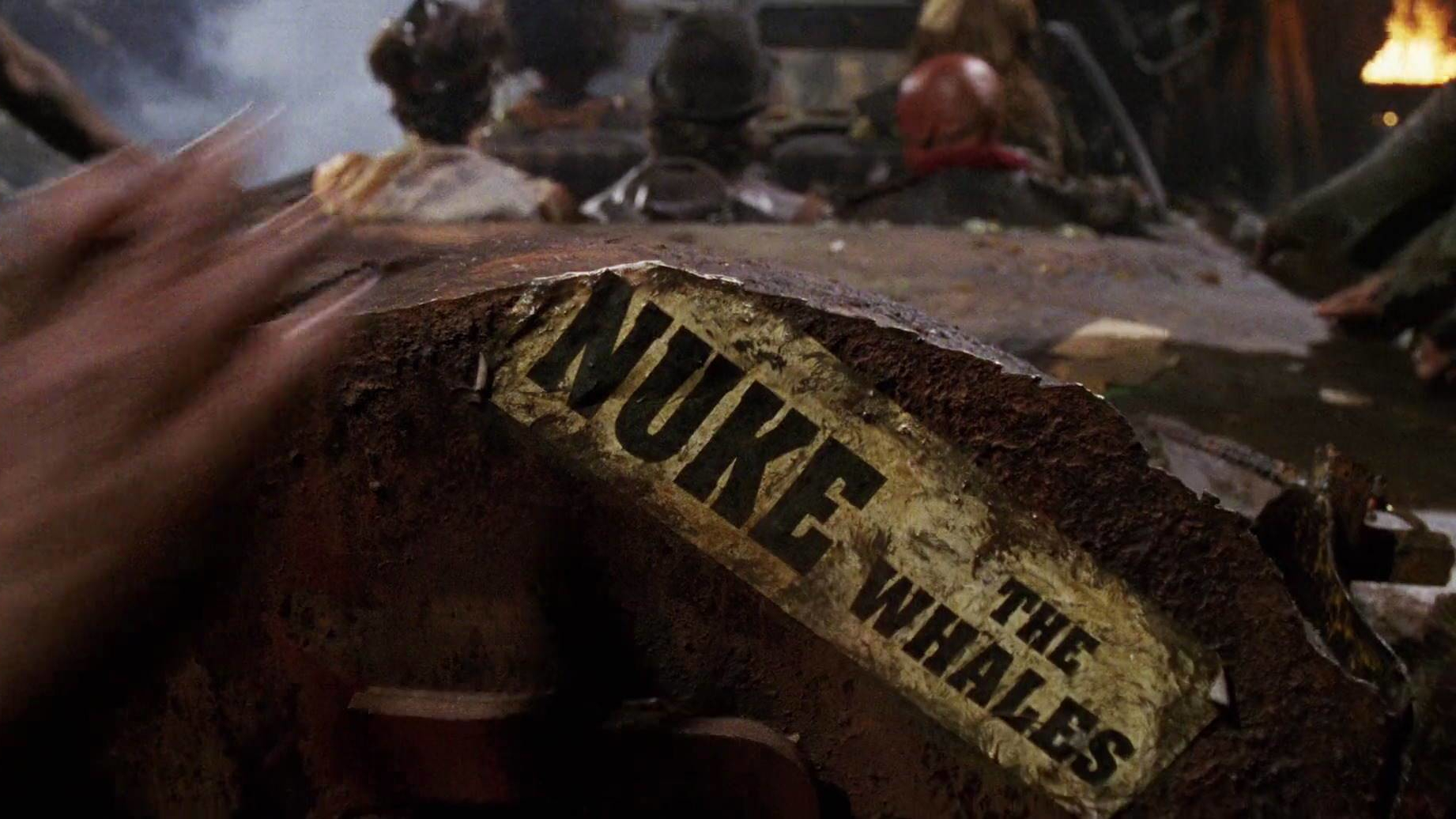
At least it's easy to see where the money went; generally, better news for the economy of Hawaii (where much of the film was shot) than Universal's coffers.
Breaking space news, the latest updates on rocket launches, skywatching events and more!
Before cameras started rolling, Reynolds had asked Steven Spielberg if he had any advice for a filmmaker intending to shoot on the ocean. Spielberg — who had relevant experience of such matters after "Jaws" went over-schedule and over-budget — told him not to bother, encouraging Reynolds to explore other options like studio space or giant water tanks instead. Universal CEO Sid Sheinberg (another "Jaws" survivor) also warned the production team to assume they'd spend at least 25% more than they originally budgeted. This estimate turned out to be rather conservative.
Indeed, Reynolds must have wished he'd heeded Spielberg's words when Costner was stuck at the top of a mast during a storm, and one significant set (a slave trader outpost) was decimated by a hurricane. Beyond these acts of god came additional costs such as chartering additional boats to carry support crew (make-up artists, stunt people etc) to the necessary locations.
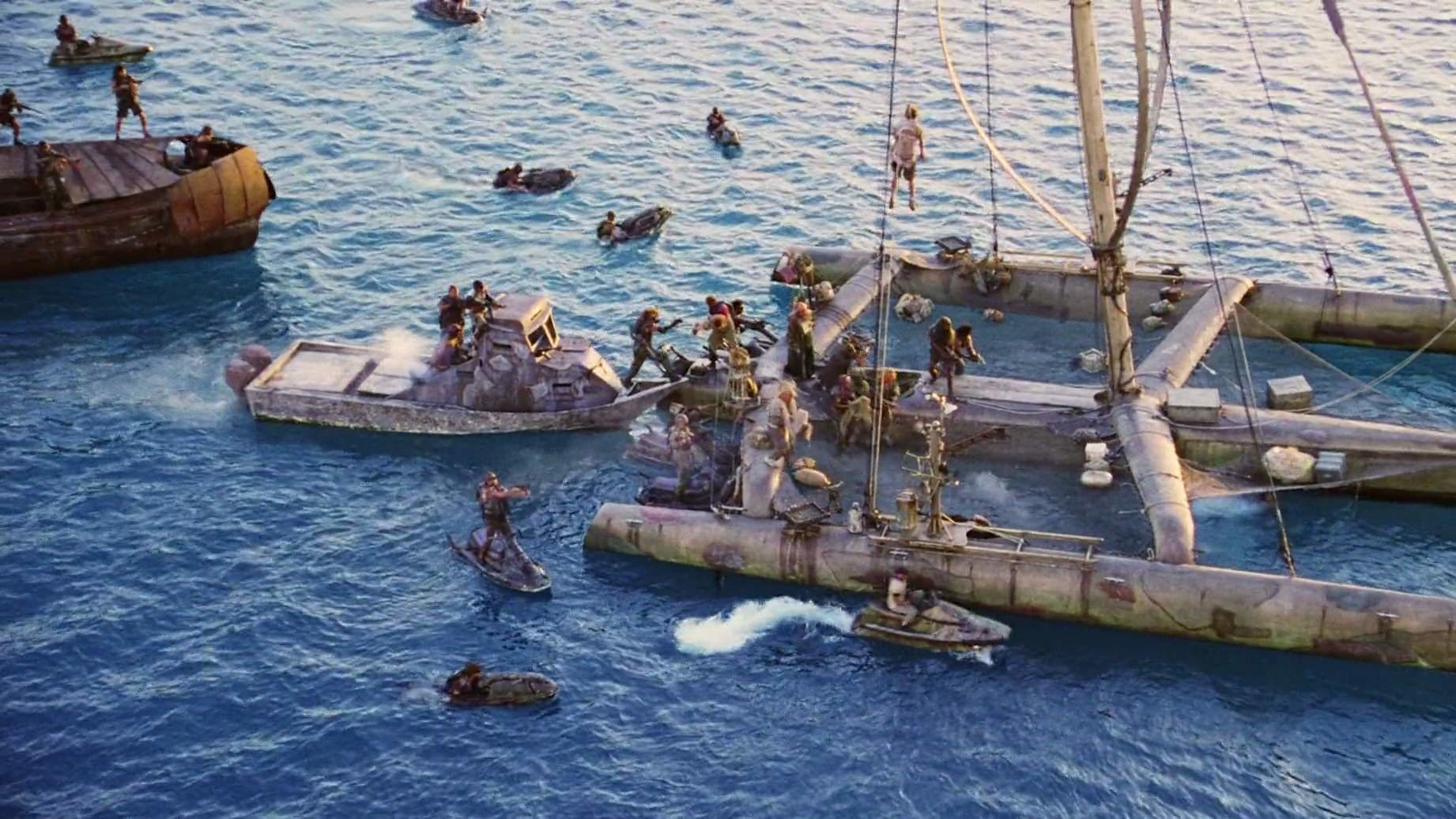
There was presumably a massive sigh of relief, then, when it was decided to shoot the final oil tanker-set battle on dry land, with green screens and groundbreaking digital effects filling in for actual sea. The underwater sequence where the Mariner (Costner) shows Helen (Jeanne Tripplehorn) a submerged city was realized with intricate models, including a sunken recreation of the Orca, Quint's boat in "Jaws".
Still, Reynolds' commitment to shooting on real-life waves brought spectacular levels of verisimilitude to "Waterworld", which remains an absolute triumph of world-building.
When we first meet the Mariner, he's peeing into a water filtration unit, before taking a swig of what comes out. This is clearly a man totally at ease with his surroundings, yet his tricked-out trimaran is the undoubted star of the movie, a bespoke piece of engineering meticulously rigged for its one careful owner.
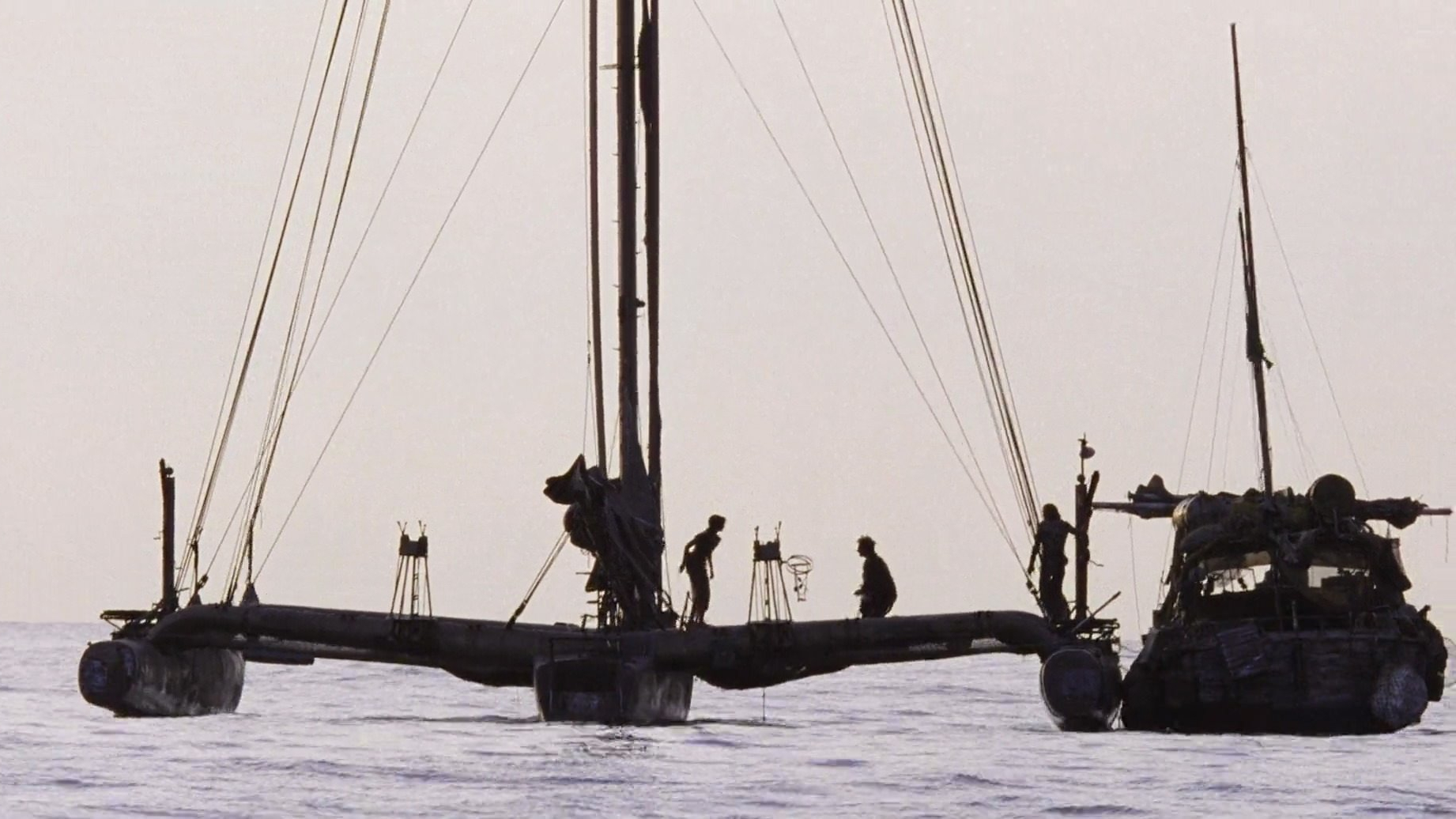
The Mariner is a stark contrast to the "Smokers", seedy, spam-eating antagonists who operate out of a rusted-up version of the Exxon Valdez tanker that ran aground in Alaska in 1989. Led by Dennis Hopper's scenery-chewing (or should that be drinking?) Deacon, they're the perfect allegory for a society unable to reduce its dependence on fossil fuels. ("Waterworld" may not explain exactly how the Earth came to be underwater — the closest it comes is a character saying "the ancients did something terrible" — but you don't have to look hard to find its eco-friendly messaging.)
Somewhere in the middle are the residents of the Atoll, a floating settlement where the last representatives of humanity have adapted to survive in an environment they're totally unsuited for. Dirt is now a prized currency, while anything that can be recycled — even the deceased — is repurposed in some way. Unfortunately, in the spirit of "Mad Max", this is also a truly lawless society, where trusting the wrong person can get you killed.
If only the script could live up to the movie's setting. Despite Hopper's gleeful overacting — and the last-minute script-doctoring efforts of Joss Whedon — genuine humor is nearly as scarce as dirt. It's also clear that the studio cut out a little too much in an effort to keep the runtime close to two hours, though you can still see a lot of the excised footage — including a scene that confirms dry land is actually Mount Everest — in the more leisurely TV and "Ulysses" cuts available on Blu-ray releases.
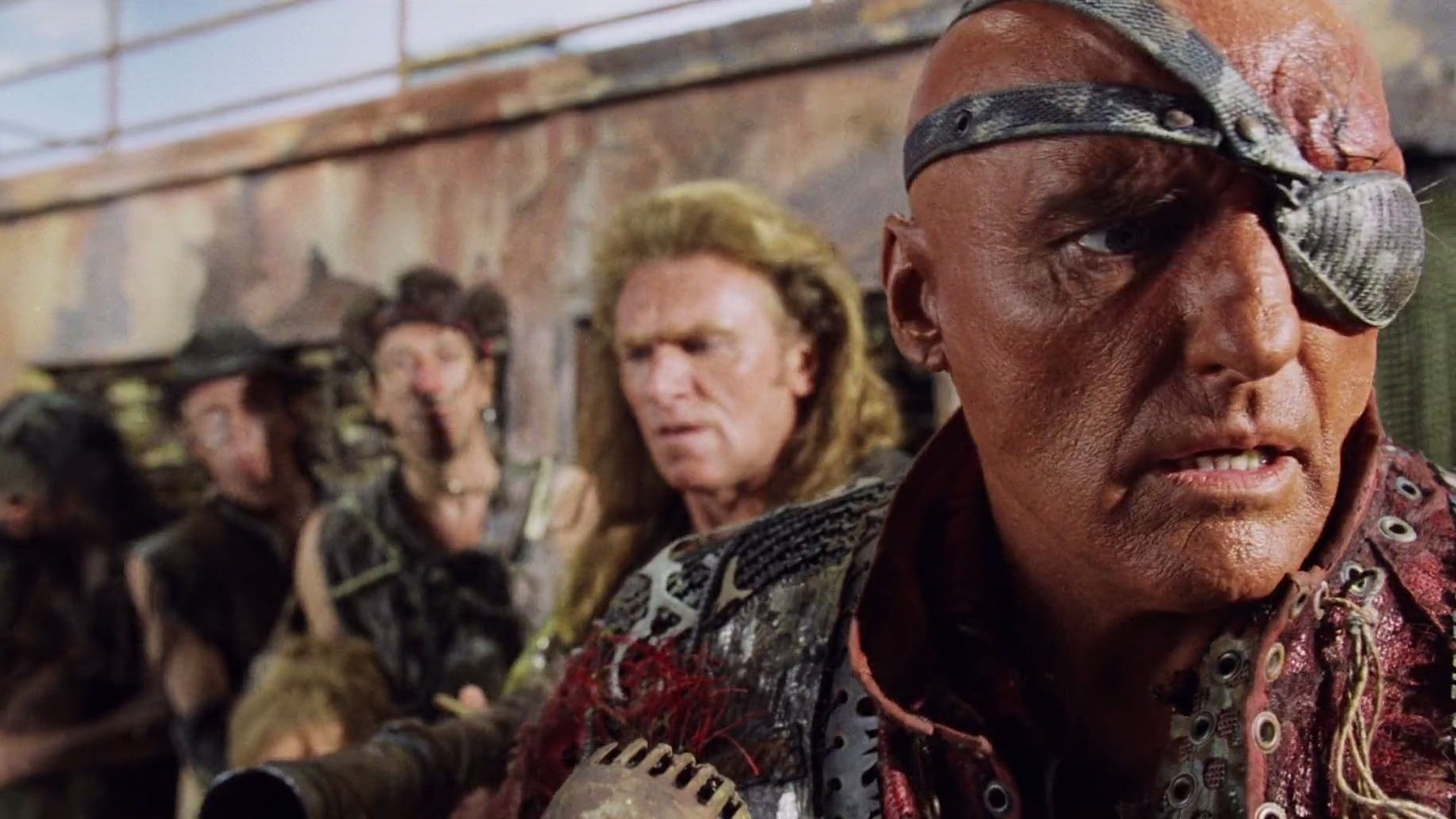
Aside from being upstaged by his boat, the Mariner is a dour, uncharismatic lead who struggles to convince when he transforms into a superhuman hero in the final act. While that particular character arc was par for the course in '90s actioners, the decision to make him an Ichtyus Sapien — with gills and webbed feet — just feels like a magic trick to get a writer out of a bind later on.
Positing that the entire planet is underwater is arguably an acceptable use of dramatic licence — the US Geological Survey estimates that, if all the glaciers and ice caps melted, sea levels would rise by around 70 meters — but tens of millions of years of evolution condensed into a few centuries? Sometimes, even the biggest budget in (then) Hollywood history isn't enough to buy you plausibility.
"Waterworld" is available to rent and buy on Apple TV and Prime Video in the US and UK.
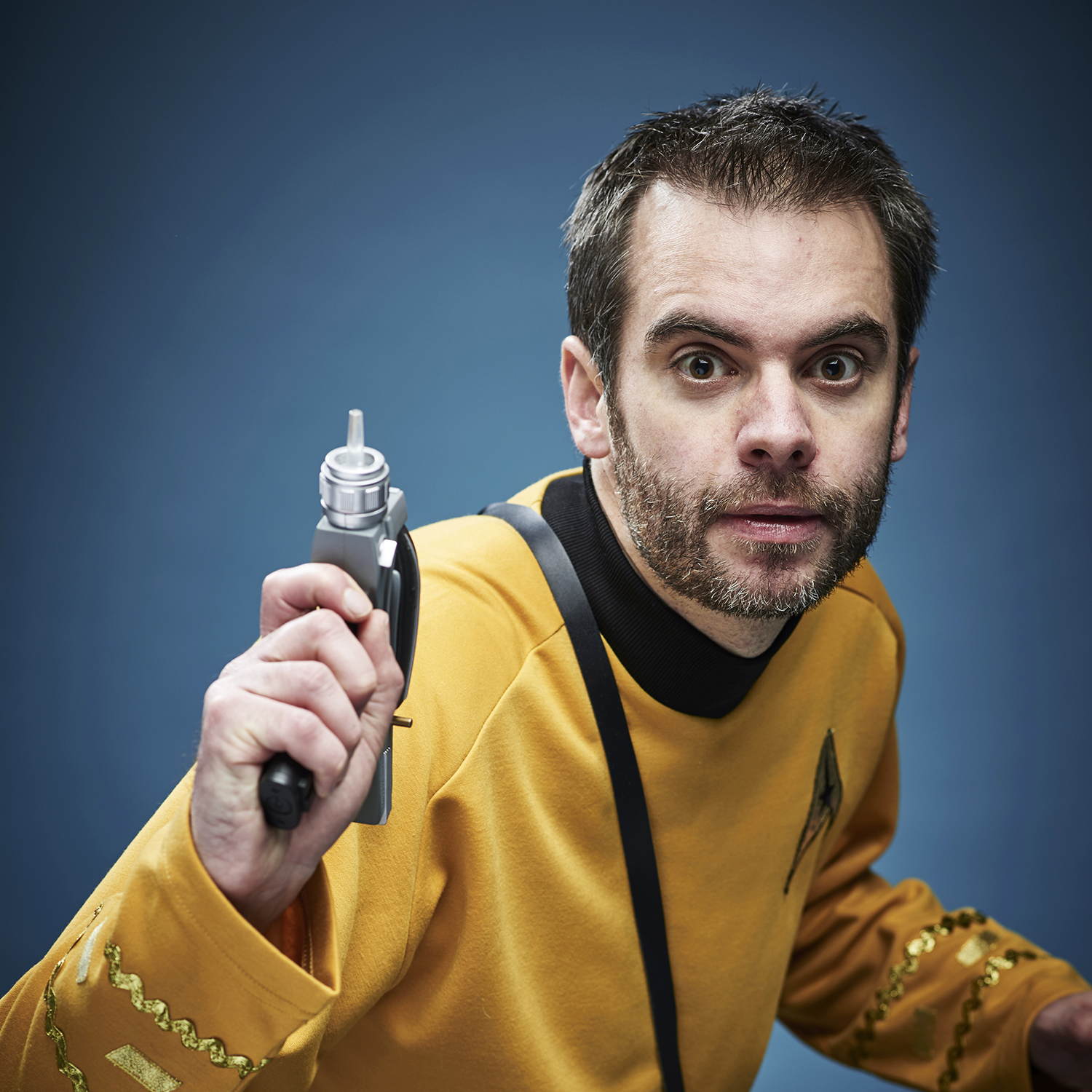
Richard's love affair with outer space started when he saw the original "Star Wars" on TV aged four, and he spent much of the ’90s watching "Star Trek”, "Babylon 5” and “The X-Files" with his mum. After studying physics at university, he became a journalist, swapped science fact for science fiction, and hit the jackpot when he joined the team at SFX, the UK's biggest sci-fi and fantasy magazine. He liked it so much he stayed there for 12 years, four of them as editor.
He's since gone freelance and passes his time writing about "Star Wars", "Star Trek" and superheroes for the likes of SFX, Total Film, TechRadar and GamesRadar+. He has met five Doctors, two Starfleet captains and one Luke Skywalker, and once sat in the cockpit of "Red Dwarf"'s Starbug.
You must confirm your public display name before commenting
Please logout and then login again, you will then be prompted to enter your display name.
